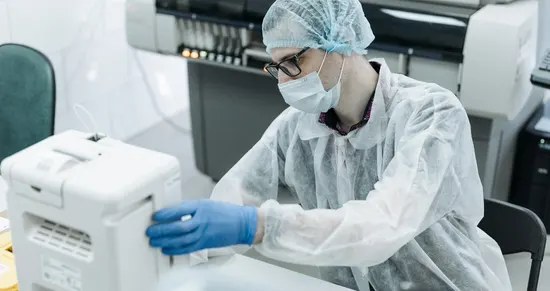Technical Documentation for medical devices under the new EU MDR Regulations.
Under EU MDR Regulations manufacturers need to establish and maintain a EU MDR Technical Documentation as an evidence of conformity with the relevant legislation.
Although medical devices can still be placed on the market under the provisions of the MDD/AIMDD as indicated in Article 120 MDR after 26 May 2021 under certain circumstances, manufacturers should prepare to update their Technical Documentation to MDR as per the EU MDR Regulation. This is also true for manufacturers of class I devices that are not provided sterile, have no measuring function and are not reusable surgical instruments even though no involvement of a Notified Body is required.
Though the relevant annex for the Technical Documentation according MDR is Annex II and Annex III, you should be aware that other articles and annex need to be taken into consideration.
The Technical Documentation is for example heavily interwoven with Annex I (GSPR), and also the conformity assessment according to Annex IX to XI include requirements applicable to the Technical Documentation.
Annex II of the EU MDR Regulation shows that the requirements for the Technical Documentation have been increased compared to the MDD, but they are now also outlined in a clearer way. One change that might affect your Technical Documentation is the post-market surveillance (PMS): While products on the market have already PMCF data, user feedback, complaints and/or competitor analysis data available, new devices first need to establish these PMS data. Nevertheless, it needs to be shown how this data will be generated. The data may consist of the manufacturers post-market surveillance plan (which might include a planned PMCF study), but should also include vigilance data from competitors already.
Structure of MDR Technical Documentation
The regulatory requirements do not specify how manufacturers should structure the technical documentation.
One of the best known proposals for structuring technical documentation comes from the IMDRF (formerly the GHTF). A lot of authorities and notified bodies use the STED (Summary Technical Documentation) as a guide.
Annex II of the new EU MDR prescribes more than forty specific elements for the content of the (primary) “EU MDR Technical Documentation”. Plus Annex III of the EU MDR requires more than fifteen additional elements in the “Technical Documentation on Post Market Surveillance”.
Article 10 of the EU MDR makes the creation and maintenance of both parts of the EU MDR Technical Documentation an obligation of all Manufacturers. The Technical Documentation is to be supplied to Competent Authorities when requested. A copy is also to be kept by Authorized Representatives (EU MDR Article 11). It is also one of the items the “Person responsible for regulatory compliance (PRRC)” has to ensure is kept up to date (EU MDR Article 15) and it is to be assessed by the Notified Body (EU MDR Annex IX chapter II). In contrast to the MDD, the new EU MDR Regulations are consistent throughout on the subject of the EU MDR Technical Documentation.
The (primary) Technical Documentation of Annex II of new EU MDR Regulations clearly based on the so called summary technical documentation or STED, developed by the former Global Harmonization Task Force (GHTF)
Technical Documentation Requirements in Annexes II and III
Content of technical documentation as outlined in Annexes II and III of the MDR
| Annex II | Technical Documentation |
| 1 | Device description and specification, including variants and accessories |
| 1.1 | Device description and specification |
| 1.2 | Reference to previous and similar generations of the device |
| 2 | Information to be supplied by the manufacturer |
| 3 | Design and manufacturing information |
| 4 | General safety and performance requirements |
| 5 | Benefit–risk analysis and risk management |
| 6 | Product verification and validation |
| 6.1 | Pre-clinical and clinical data |
| 6.2 | Additional information required in specific cases |
| Annex III | Technical Documentation on Post Market Surveillance |
| 1 | The post-market surveillance plan |
| 2 | The PSUR (Periodic Safety Update Report) |
| 3 | PMS Report |
In all conformity assessment procedures involving a NB, a review of the EU MDR technical documentation is mandatory. Article 52 of the EU MDR provides details on the conformity assessment procedures, which are further set out in Annexes IX–XI, depending on the device.
Audit Sampling Rate Based on Device Classification
The sampling rate applied during audit by your NB is dependent upon the device classification, as detailed in the following list:
- Class lll implantable devices: Assessment of the technical documentation for every device
- Class III devices: Assessment of the technical documentation for every device
- Class IIb implantable devices (except sutures, staples, dental filings, dental braces, tooth crowns, screws, wedges, plates, wires, pins, clips and connectors) and class IIb active devices intended to administer and/or remove a medicinal product: Assessment of the technical documentation for every device
- All other class IIb devices: Assessment of the technical documentation for at least one representative device per generic device group
- Class IIa devices: Assessment of the technical documentation for at least one representative device for each category of devices
- Class I devices which are placed on the market in sterile condition, have a measuring function or are reusable surgical instruments: Assessment of the technical documentation relating only to those specific features of the device, e.g. sterility, measurement or re-use
For class I devices, which are not provided sterile, have no measurement function and are not reusable surgical instruments, NBs are not involved in conformity assessment. For such devices, manufacturers shall ‘declare the conformity of their products, by issuing the EU declaration of conformity referred to in Article 19 after drawing up the technical documentation set out in Annexes II and III’ (Article 52, point 7).
Components of Technical Documentation
Device Description and Specification
- Product name, description, intended purpose
- Product identification including basic UDIDI
- Principles of operation and mode of action
- Technical and material specification, description of key functional elements and any novel features
- Overview of previous generations of the device
- Overview of similar devices available in the EU or elsewhere
Labeling and Instructions for Use
Explore Our Medical Device Labelling
Design & Manufacturing Information
- Information to allow key design stages to be understood
- Description of manufacturing processes
- Manufacturing validations, monitoring and final product testin
- Identification of all suppliers and subcontractors undertaking design or manufacturing processes for the manufacturer
General Safety & Perfomance Requirements
- Identification of applicable SPRs
- Methods used to demonstrate conformity
- Applicable standards, Common Specifications or other requirements
- Links to documents demonstrating conformity with SPRs
Explore GSPR
Risk Management Documentation
- Benefit-risk analysis as required by SPRs 1 & 8
- Solutions adopted and results of Risk Management as required by SPR 3
Explore Risk Management for Medical Device
Product Verification and Validation Reports
- Pre-clinical and clinical testing
- Clinical evaluation report and plan
- PMCF plan and evaluation report
- Specific validations for devices incorporating medicinal substances, animal or human tissues, CMR or endocrine-disrupting substances, absorbable devices, sterile devices, devices with measuring function, devices used in combination
Clinical Evaluation Report (CER)
- Provides detailed information about the device, including intended use and indications.
- Includes clinical studies, literature reviews, and post-market surveillance data.
- Describes the approach for assessing clinical evidence.
- Evaluates patient safety versus device benefits.
- Confirms adherence to standards like EU MDR.
- Ensures ongoing review and post-market monitoring.
Post-Market Surveillance Plan
- Includes product description, intended use, and risk classification.
- Lists methods such as surveys, complaints, incident reports, and registry data.
- Specifies processes like trend analysis, user feedback, and clinical follow-ups.
- Assigns roles for implementing the surveillance plan.
- Ensures adherence to EU MDR or equivalent standards.
- Outlines frequency and format for updates and regulatory submissions.
Declaration of Conformity
- Clearly labeled as “Declaration of Conformity.
- Includes name, address, and contact information.
- Specifies device name, model, and unique identifiers.
- Lists applicable regulations and standards, such as EU MDR.
- Signed by an authorized representative of the manufacturer.
- Includes details if applicable.
- Indicates when and where the declaration was signed.
Device Classification Justification
- Identifies applicable classification rules per regulatory guidelines (e.g., EU MDR).
- Evaluates risks associated with the device’s intended use and design.
- Defines usage scenarios and target patient population.
- Includes rationale, clinical data, and standards supporting the classification.
- Cites relevant regulatory frameworks and standards.
Additional Components (If Applicable)
- Includes user manuals, labels, and packaging details.
- Provides testing data for functionality and performance.
- Details clinical investigations, if conducted.
- Includes biocompatibility assessments and test reports.
- Documents sterilization methods and efficacy.
- Covers software lifecycle, validation, and risk assessments (if applicable).
- Contains relevant certifications, such as CE marking or ISO compliance.
Annexes
- Annex I: General Safety and Performance Requirements (GSPR) checklist compliance.
- Annex II: Full Clinical Evaluation Report (CER) and supporting clinical data.
- Annex III: Risk management file, including analysis and mitigation measures.
- Annex IV: Testing reports for physical, chemical, and biological properties.
- Annex V: Labeling, packaging, and user manual samples.
- Annex VI: Certification copies from notified bodies.
- Annex VII: Post-Market Surveillance (PMS) and Periodic Safety Update Report (PSUR).






